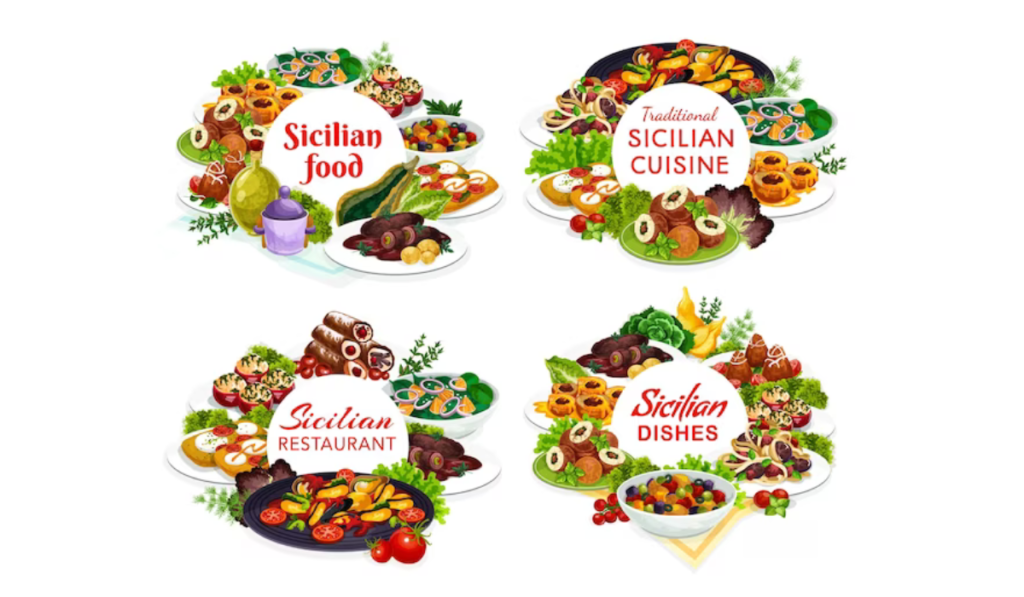The United States is a melting pot of cultures, each bringing its own unique flavors and culinary traditions to the table. From the spicy Cajun dishes of Louisiana to the fresh seafood of the Pacific Northwest, American cuisine is as diverse as the country itself. Regional flavors play a crucial role in defining American food culture, showcasing the rich tapestry of ingredients, techniques, and traditions that have been passed down through generations.
In this article, we will explore the diverse culinary heritage of America’s regions, highlighting the signature dishes, ingredients, and cooking styles that make each area unique. From the soul food of the South to the hearty comfort foods of the Midwest, we will take a deep dive into the flavors that have shaped American cuisine and continue to inspire chefs and food lovers alike.
1. The South: A Taste of Southern Comfort
The South is known for its hearty, soulful cuisine that reflects the region’s history of agriculture and slavery. From crispy fried chicken and flaky biscuits to rich gumbo and decadent sweet tea, Southern cooking is all about comfort and flavor. Key ingredients like cornmeal, collard greens, and black-eyed peas are staples in Southern kitchens, along with plenty of butter and bacon.
2. The Midwest: Home of Comfort Foods
The Midwest is the heartland of America, known for its simple, hearty fare that reflects the region’s farming heritage. Dishes like meatloaf, mashed potatoes, and casseroles are popular in Midwest households, along with plenty of pies and pastries. Midwest cuisine is all about comfort and tradition, with a focus on using local ingredients and cooking with love.
3. The Northeast: From Sea to Table
The Northeast is a seafood lover’s paradise, with fresh catches from the Atlantic Ocean making their way onto plates across the region. Lobster rolls, clam chowder, and oysters are just a few of the iconic dishes that showcase the Northeast’s love of all things seafood. In addition to seafood, the Northeast is also known for its artisanal cheeses, craft beers, and farm-to-table dining scene.
4. The West Coast: Fusion and Freshness
The West Coast is a melting pot of flavors, blending influences from Asia, Mexico, and Europe to create a vibrant and diverse culinary scene. California cuisine, with its emphasis on fresh, seasonal ingredients and innovative cooking techniques, has had a huge impact on the food world. From fish tacos and avocado toast to farm-fresh salads and sushi burritos, the West Coast is a food lover’s paradise.
5. The Southwest: Spice and Heat
The Southwest is known for its bold, spicy flavors that reflect the region’s Mexican and Native American influences. Dishes like green chile stew, carne adovada, and Navajo fry bread are staples in Southwest cuisine, along with plenty of hot peppers and aromatic spices. The Southwest’s love of heat and flavor is evident in its rich and complex dishes that showcase the region’s culinary heritage.
6. The Pacific Northwest: A Feast of Freshness
The Pacific Northwest is a food lover’s paradise, with its abundance of fresh seafood, wild mushrooms, and artisanal cheeses. Dishes like cedar-plank salmon, Dungeness crab cakes, and Marionberry pie highlight the region’s love of local, seasonal ingredients. The Pacific Northwest’s commitment to sustainability and farm-to-table dining has made it a leader in the culinary world.
7. The Mid-Atlantic: A Blend of Traditions
The Mid-Atlantic is a melting pot of flavors, blending influences from the South, Northeast, and Midwest to create a unique and diverse culinary landscape. Dishes like Maryland crab cakes, Philadelphia cheesesteaks, and New York pizza showcase the region’s love of fresh seafood, hearty sandwiches, and Italian-inspired fare. The Mid-Atlantic’s rich history and multicultural heritage are evident in its vibrant and delicious cuisine.
8. The Great Plains: Wholesome and Hearty
The Great Plains is known for its simple, hearty fare that reflects the region’s history of farming and ranching. Dishes like buffalo stew, cornbread, and fried chicken showcase the Great Plains’ love of wholesome, flavorful food. The region’s vast prairies and rich soil have helped shape its culinary heritage, with ingredients like beef, corn, and potatoes playing key roles in dishes that are both comforting and delicious.

9. The Deep South: A Taste of Tradition
The Deep South is known for its rich and soulful cuisine that reflects the region’s history of slavery and segregation. Dishes like hush puppies, collard greens, and shrimp and grits are staples in Deep South kitchens, along with plenty of fried chicken and sweet tea. The region’s love of comfort and tradition is evident in its flavorful and satisfying dishes that are passed down through generations.
10. New England: A Feast of Flavors
New England is a food lover’s paradise, with its abundance of fresh seafood, hearty chowders, and sweet maple syrup. Dishes like clam chowder, lobster rolls, and blueberry pie highlight the region’s love of all things fresh and local. New England’s commitment to sustainable farming and seafood practices has made it a leader in the farm-to-table movement, with chefs and food lovers flocking to the region for its delicious and innovative cuisine.
11. The Rust Belt: A Fusion of Cultures
The Rust Belt is a melting pot of flavors, blending influences from Europe, Africa, and Asia to create a diverse and vibrant culinary scene. Dishes like pierogies, sausages, and pastrami sandwiches showcase the Rust Belt’s love of hearty, comforting fare. The region’s history of immigration and industrialization has shaped its culinary heritage, with dishes that reflect the diverse cultures that have called the Rust Belt home.
12. The Southwest: A Fusion of Flavors
The Southwest is a fusion of flavors, blending influences from Mexico, Spain, and the Native American tribes that have called the region home. Dishes like tacos, enchiladas, and tamales showcase the Southwest’s love of bold, spicy flavors and traditional cooking techniques. The region’s rich and diverse culinary heritage is evident in its vibrant and flavorful dishes that are enjoyed by locals and visitors alike.
13. The Eastern Seaboard: Fresh and Flavorful
The Eastern Seaboard is a seafood lover’s paradise, with its abundance of fresh catches from the Atlantic Ocean. Dishes like oysters, lobster, and clam chowder highlight the region’s love of all things fresh and flavorful. The Eastern Seaboard’s commitment to sustainable fishing practices and farm-to-table dining has made it a leader in the culinary world, with its delicious and innovative dishes drawing food lovers from around the globe.
14. The Gulf Coast: A Feast of Flavors
The Gulf Coast is known for its bold and spicy cuisine, with dishes like gumbo, jambalaya, and crawfish etouffee showcasing the region’s love of Creole and Cajun flavors. The Gulf Coast’s proximity to the Gulf of Mexico has shaped its culinary heritage, with fresh seafood, spicy peppers, and aromatic spices playing key roles in its flavorful and satisfying dishes. The region’s love of heat and flavor is evident in its rich and complex dishes that are a true reflection of its cultural heritage.
15. The Mountain West: A Taste of the Wild
The Mountain West is a region of vast wilderness and stunning natural beauty, with a culinary heritage that reflects its rugged and adventurous spirit. Dishes like bison burgers, elk steaks, and trout fillets showcase the region’s love of wild game and fresh, local ingredients. The Mountain West’s commitment to outdoor cooking and sustainable farming practices has made it a leader in the farm-to-table movement, with its hearty and flavorful dishes drawing food lovers from near and far.
In conclusion, regional flavors play a crucial role in defining America’s diverse culinary heritage, showcasing the rich tapestry of ingredients, techniques, and traditions that have been passed down through generations. From the spicy Cajun dishes of the South to the fresh seafood of the Pacific Northwest, American cuisine is a reflection of the country’s multicultural history and vibrant food culture. Whether you’re craving comfort food, bold flavors, or fresh ingredients, there’s a regional flavor to satisfy every palate in America. So next time you sit down to a meal, remember to savor the unique and delicious flavors of America’s diverse culinary heritage.
FAQs about “Regional Flavors: A Taste of America’s Diverse Culinary Heritage”
- What distinguishes “Regional Flavors: A Taste of America’s Diverse Culinary Heritage” from other books on American cuisine? This book explores the rich tapestry of American culinary heritage by focusing on the diverse regional flavors that define the country’s food culture, offering a comprehensive look at the unique dishes and ingredients found across different regions.
- Which regions and their culinary specialties are featured in this book? “Regional Flavors” features a wide range of American regions and their culinary specialties, including Southern comfort food, New England seafood, Tex-Mex cuisine, Pacific Northwest seafood, Midwest casseroles, and more.
- How does this book celebrate the cultural diversity and culinary traditions of America? This book celebrates the cultural diversity and culinary traditions of America by showcasing the flavors, influences, and traditions that have shaped regional cuisines across the country, reflecting the melting pot of cultures that define American food culture.
- Are specific dishes and ingredients highlighted in this book to exemplify the culinary diversity of America? Yes, this book features specific dishes and ingredients from each region, ranging from barbecue and gumbo to clam chowder and chili, providing readers with a comprehensive overview of the diverse flavors and culinary traditions found across America.
- Can readers expect to find practical recipes and tips for exploring regional American cuisine from this book? Absolutely! “Regional Flavors” offers practical recipes, cooking techniques, and tips for readers to explore regional American cuisine in their own kitchens, allowing them to savor the unique flavors and culinary heritage of different regions across the country.
Advantages:
- Diversity Emphasis: “Regional Flavors: A Taste of America’s Diverse Culinary Heritage” highlights the rich diversity of American cuisine by focusing on regional flavors, showcasing the unique culinary traditions and ingredients found across the country.
- Cultural Exploration: The title encourages readers to explore the diverse culinary heritage of America, fostering a deeper appreciation for the regional dishes, cooking styles, and cultural influences that contribute to the country’s gastronomic tapestry.
- Educational Value: By emphasizing America’s diverse culinary heritage, the title offers readers valuable insights into the history, cultural significance, and ingredients of regional American dishes, enriching their understanding of American food culture.
- Practicality: As a guide to regional American flavors, the title serves a practical purpose for readers interested in experiencing the breadth of American cuisine, providing them with inspiration and recommendations for exploring regional dishes and culinary traditions.
- Inspiration for Travel and Dining: The title may inspire readers to embark on culinary journeys across America to sample its regional flavors firsthand, or to seek out regional American restaurants or markets in their own cities, fostering culinary exploration and appreciation of American gastronomy.
Disadvantages:
- Oversimplified Focus: While the title emphasizes regional flavors, it may overlook certain regional dishes or culinary traditions that could provide a more comprehensive overview of America’s diverse culinary heritage.
- Cultural Misrepresentation: Focusing solely on regional flavors may oversimplify the complexity of American cuisine and overlook other cultural influences, historical contexts, or culinary innovations that have shaped American food culture.
- Accessibility: Some regional ingredients or dishes may be difficult to find outside of specific regions or major culinary hubs, limiting the practicality of experiencing authentic regional American flavors for readers in certain areas.
- Audience Limitation: The title may primarily appeal to readers with a specific interest in American cuisine or food culture, potentially excluding those who prefer other types of cuisine or are seeking a broader overview of global culinary traditions.
- Subjectivity: The selection of regional flavors may be subjective and may not fully represent the diversity of American cuisine according to different tastes, preferences, or cultural perspectives.
















